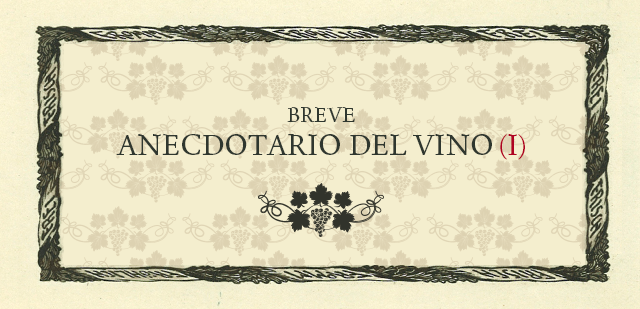Short Stories About Wine (I)

In his highly recommendable and lavish book The Story of Wine, Hugh Johnson describes the winegrower as “a farmer and an artist, a slave and a dreamer, a hedonist and a masochist, an alchemist and an accountant.” We couldn’t agree more, but would also add that he or she embodies the continuation of an age-old tradition. This is how it’s always been.
Over the centuries, wine has played a leading role in international conflicts, advances in science, economics and commerce, and, of course, moments of indescribable and absolute pleasure, exquisite anecdotes and historical events.
1. Water, tea and chocolate: challenging times for wine
The 17th century. Not only was wine the most hygienic of all beverages, it was storable. Drinking water was scarce in cities. Spirits were not available. Neither was coffee. Europeans were living a golden age of wine.
The advent of drinking water in big cities, the spirits distillation boom and the arrival of new seductive products like coffee, tea and chocolate, which were becoming readily available in Great Britain and France, relegated wine to a secondary role for almost a century.
2. The first “World Cup” of wine
We now travel back to the High Middle Ages. The wool and wine trade generated great fortunes among the keen merchants of Flanders, Germany, France and Great Britain, and the Champagne region was hosting the first international fairs.
This was the context in which the king of France had the brilliant idea of celebrating the first “battle of wine” in 1224. It was a type of wine “World Cup” that saw the participation of over 70 countries and wine regions, including the most renowned ones in France.
And who won? Cyprus!
3.Victor or Victoria? The gender of vitis vinifera
The vitis vinifera species has four distant cousins: vitis rupestris, vitis riparia and vitis aestivalis. Of the four, only vinifera is suitable for winegrowing and subsequent vinification. But, why?
To begin with, none of the others can accumulate enough sugar (up to a third of its volume) or produce a sufficient amount of suitable acidity. In order to so, vitisvinifera must be grown in moderately warm latitudes, which extend from the shores of the Caspian Sea in the eastern part of the continent all the way to Western Europe.
Alright, let’s move on to what really interests us. The gender of the vine. As with many other plants, the wild vine produces male or female flowers, but both genders rarely coexist within the same plant. This means a female plant will only yield fruit if a male plant provides the pollen.
Male plants are always infertile, which is why farmers got rid of them. As a result, the once productive female vines eventually grew infertile too, because no male plants were around to fertilize them.
This is why, the (good) wine we enjoy these days comes from vines that are hermaphrodites.
Sources:
- The World Atlas of Wine by Hugh Johnson and Jancis Robinson. Octopus Publishing Group
- The Story of Wine. Hugh Johnson. Octopus Publishing Group
- Diccionario Salvat del Vino. Mauricio Wiesenthal. Ed. Salvat



